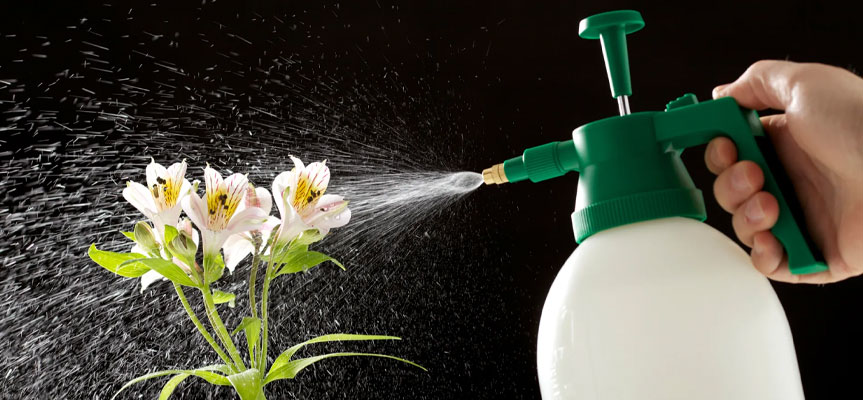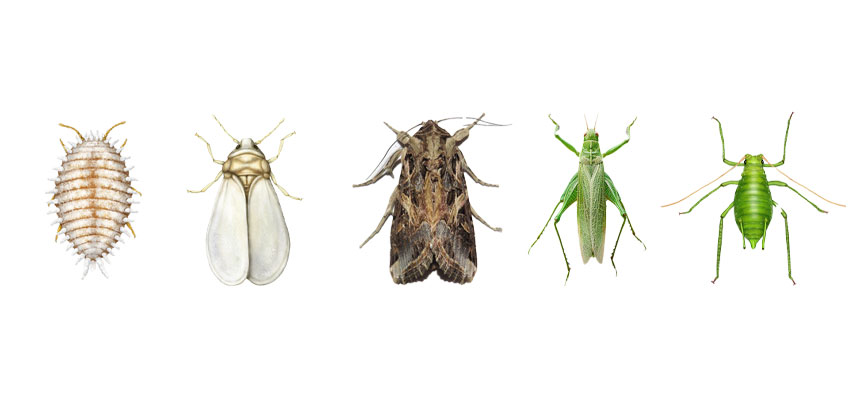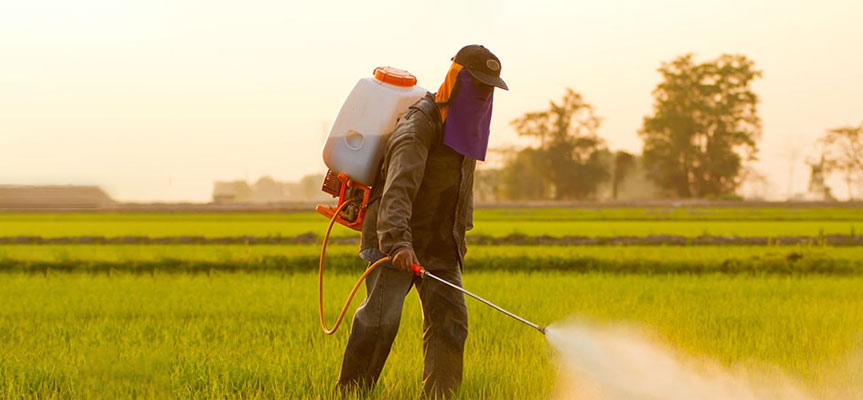Pest management is one of the most fundamental aspects of successful and sustainable agriculture. Agricultural pests cause significant damage to farms and orchards every year, leading to reduced yield and quality of crops. Farmers, agri-tech startup owners, and players in the food industry are seeking methods that are both effective and non-damaging to human health, the environment, and soil.
In this article, various methods of agricultural pest control—from traditional to modern—are thoroughly examined, and the advantages, disadvantages, and applications of each method are explained.
What Are Agricultural Pests and Why Should They Be Controlled?
Agricultural pests refer to a group of organisms including insects, mites, fungi, bacteria, viruses, rodents, and even birds that damage field, orchard, or greenhouse plants. These organisms can reduce yield, lower crop quality, increase production costs, and even lead to total crop loss through direct feeding on plant parts, transmitting diseases, or destroying roots.
Pest control is not merely an economic measure it also involves food security, conservation of natural resources, and public health. Without effective control, pests can reproduce rapidly and cause irreparable damage to agricultural ecosystems on a large scale. Therefore, the use of scientific, systematic, and sustainable pest control methods is essential for modern agriculture.
Categories of Agricultural Pest Control Methods
Different methods are used to combat pests based on the pest type, crop type, environmental conditions, and the farmer’s objectives. These methods can be grouped as follows:
- Mechanical and Physical Methods: Including the use of traps, nets, light, and controlled heat or cold to repel or destroy pests.
- Biological Control: Using natural enemies of pests such as parasitic wasps, ladybugs, or beneficial fungi.
- Chemical Methods: Applying various agricultural pesticides to directly eliminate pests.
- Organic and Natural Methods: Including plant extracts, biofertilizers, natural oils, and non-chemical formulas.
- Modern Technologies: Utilizing AI, drones, sensors, nanotechnology, and smart monitoring systems.
A smart combination of these methods within an Integrated Pest Management (IPM) program is one of the most sustainable solutions for agricultural pest control.
Chemical Methods: Use of Agricultural Pesticides
Application of Pesticides
Chemical pesticides are recognized as the first and fastest solution when facing pests. These pesticides are commonly available as spray solutions or powders and can target a wide range of pests.
Advantages
- Rapid and widespread pest control
- High effectiveness in a short time
Disadvantages
- Negative impact on human health and the environment
- Reduction in biodiversity and harm to beneficial insects
- Development of resistance in pests against pesticides
Mechanical and Physical Methods
These are among the oldest yet safest pest control techniques, implemented without using chemical substances:
- Light and sticky traps: Attracting flying insects like whiteflies and gnats using light and special adhesives.
- Protective netting: Preventing insect entry into fields or greenhouses using fine mesh screens.
- Deep plowing and removal of contaminated residues: Destroying pest nests and eggs in the soil.
- Use of high or low temperatures: Freezing or heating to eliminate pests in storage facilities or post-harvest products.
- Manual pest collection: A simple yet practical method in small farms.
Mechanical methods are often effective in the early stages of infestation or as a supplement to other techniques.

Natural Methods of Pest Control
In recent years, there has been growing attention to natural pest control methods. These methods aim to reduce pest populations using natural resources such as pest-repelling plants, organic substances, and non-chemical techniques.
Examples of effective natural substances:
- Use of neem oil
- Agricultural soap solutions
- Garlic, red pepper, tobacco, and other pest-repellent plants
Advantages:
- Safe for humans and the environment
- Can be locally produced
- Helps reduce pesticide use in farming
Biological Pest Control
Biological control is one of the safest and most sustainable pest control methods. This approach involves using living organisms to combat harmful pests.
- Natural predators: Insects such as ladybugs, assassin bugs, and parasitic wasps that feed on pests.
- Pathogenic agents: Using bacteria (e.g., Bacillus thuringiensis), viruses, and fungi that infect and kill pests.
- Biological competition: Planting repellent or trap crops to distract or suppress pests.
This method requires in-depth knowledge of pest life cycles and their natural enemies, but in the long run, it reduces dependence on chemical pesticides.
Organic Pest Control Methods
Organic methods are essential for farmers interested in producing residue-free, healthy products. Some effective organic strategies include:
- Plant extracts: Such as garlic, pepper, tobacco, onion, and neem, which have repelling or toxic properties.
- Vegetable oils: Like coconut or neem oil, used to disrupt pest respiration or egg-laying.
- Biofertilizers and growth stimulants: To strengthen plant immunity and reduce vulnerability.
- Crop rotation and companion planting: To disrupt pest life cycles and prevent adaptation.
In addition to being effective, these methods also support soil health and biodiversity.

Pest Control in Greenhouses: Challenges and Solutions
Greenhouses, due to stable temperatures and high humidity, offer ideal conditions for rapid pest proliferation. As a result, pest control in greenhouse crops faces several challenges:
- Rapid contamination of the entire environment
- Limited ventilation and humidity control
- Some plants’ sensitivity to chemical pesticides
Effective solutions:
- Installing insect-proof nets and double-entry doors
- Placing light traps at the correct height and location
- Releasing beneficial insects like parasitic wasps or predators in a targeted way
- Using natural mist sprayers or herbal fumigants
Focused and daily greenhouse management plays a crucial role in preventing pest outbreaks.
Modern Technologies in Pest Control
The introduction of technology into agriculture has revolutionized pest control methods:
- Agricultural drones: For identifying infested areas, crop monitoring, and precise spraying
- Smart monitoring systems: Using sensors and IoT to analyze biological and environmental data
- Machine learning and AI algorithms: For highly accurate pest outbreak predictions
- Nanotechnology in pesticides: Creating low-dose, high-efficiency pesticides with minimal environmental harm
These tools help farmers minimize pesticide use and achieve more targeted control.
Read more: Application Image Processing in Food Industry
Pesticide-Free Farming: Dream or Reality?
With advancements in developing resistant seeds, using organic fertilizers, biological control, and organic methods, pesticide-free farming is not only possible but growing. In this journey, collaborations with startups and centers like Grownida can play a crucial role in developing practical and economic solutions.
Safe Pest Control Solutions for Humans
One of the main concerns in agriculture is minimizing the harmful effects of pesticides on human health. To this end, adopting alternative and low-risk methods is essential:
- Using natural, plant-based compounds
- Employing biological agents instead of chemical pesticides
- Applying certified, safe products for organic agriculture
- Observing pre-harvest intervals after spraying and following safety guidelines
- Training agricultural workers in using safety gear and proper pesticide application techniques
Common Agricultural Pests in Iran
In Iran, the following pests are among the most common threats to agriculture:
- Mealybugs
- Greenhouse whiteflies
- Cotton leafworms
- Locusts
- Aphids
A thorough understanding of these pests and their biological behavior is essential for selecting the best control methods.

What’s the Difference Between Chemical Pesticides and Natural Methods?
While chemical pesticides offer fast results, they pose serious risks to human health and the environment. In contrast, natural pest control methods may take longer but are more sustainable in the long term.
How to Reduce Pesticide Use on Farms?
Reducing pesticide use means safeguarding consumer health, boosting exports, and promoting soil sustainability. Key strategies include:
- Implementing an Integrated Pest Management (IPM) program
- Continuous monitoring of fields and greenhouses for early pest detection
- Using low-risk formulations and spraying at optimal times
- Replacing chemical pesticides with organic and biological methods in early stages of infestation
- Applying localized treatments instead of widespread spraying
Reducing dependency on pesticides should be a strategic goal for sustainable agriculture.
The Role of Pest Management in Increasing Farm Productivity
Effective pest management not only prevents yield loss but also helps reduce costs and conserve natural resources. This is especially vital for companies and brands involved in sustainable agriculture.
The Role of Startups and Innovation Centers in Pest Control
In recent years, startups and innovation centers have transformed pest control in traditional farming by introducing technology:
- Designing pest outbreak prediction systems using AI
- Developing smart agriculture apps for pest monitoring and immediate solutions
- Producing advanced-formula organic pest control products
- Introducing eco-friendly nanoformulations
- Creating platforms for professional farmer training and consulting
These innovations have not only made agriculture more efficient but also contributed to sustainability and public health.
Conclusion
The subject of agricultural pest control is gaining increasing importance due to global developments in sustainable farming. Smart use of natural, organic, mechanical, and tech-driven methods can be an effective alternative to excessive chemical pesticide use. Investing in innovative solutions by brands like Grownida can pave the way toward a healthier, safer, and more productive agricultural future.
Frequently Asked Questions
How can pests be controlled without pesticides?
By using natural methods such as pest-repelling plants, natural predators, and bio-mulches, pests can be managed without chemical pesticides.
What is the best method for pest control?
A combination of methods (Integrated Pest Management) including biological, natural, and mechanical techniques usually yields the best results.
How should agricultural pests be managed?
Through regular field monitoring, early pest identification, and the use of sustainable and effective methods.
Are organic pest control methods effective?
Yes, when implemented correctly, organic methods can be as effective as chemical pesticides but with fewer side effects.
What are the common pests in agriculture?
Aphids, mites, locusts, mealybugs, leafworms, whiteflies, and leaf miner flies are among the most common agricultural pests in Iran.

